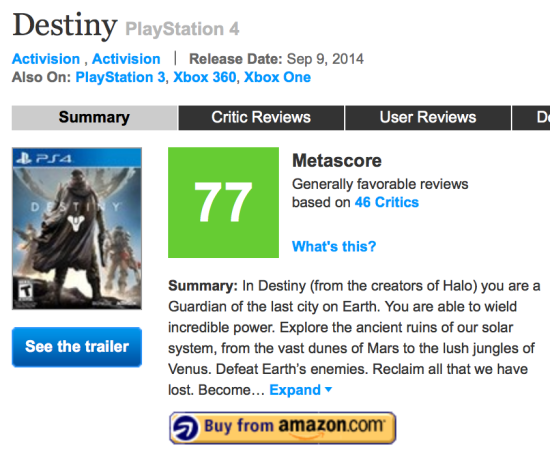One has to wonder what voodoo or devil’s pact Nintendo made that turned out such a high profile series as Smash Brothers. Originally they didn’t even intend on releasing the game outside of Japan, and now on its fourth entry Smash has become a worldwide phenomenon with a hype train that just won’t stop.
Super Smash Brothers for Nintendo 3DS marks the first time the series has had a handheld entry, and it’s meant to link up with the Wii U version once released. Standing alone as it’s currently doing though, Super Smash Bros for Nintendo 3DS is rather cramped within It’s hardware and it shows in very unfortunate ways.

“ There are of course, other fighters that I’m avoiding for the sake of spoilers, but the newcomers all fit very nicely into Smash cannon.
It’s still Super Smash Bros, of course. Now boasting an inarguably massive roster of 51 characters (12 of them to be unlocked), the digital take on sumo wrestling has never been livelier. New fighters fit into the veteran roster like a glove and with all the care and detail one would expect from the series.
For example, longtime request Mega Man is a very projectile based character and many of his special moves and smash attacks demand a bit of distance to use effectively. Villager is just as quirky as one might expect, able to pocket just about anything in the game and turn it against the user. Shulk offers a different take on the sword fighter with different modes to utilize that change up properties on his moves and Pac-Man represents not only himself, but a swath of classic arcade titles within his moveset.
There are of course, other fighters that I’m avoiding for the sake of spoilers, but the newcomers all fit very nicely into Smash cannon. Even a few returning veterans have their move sets shaken up, with Dr. Mario returning and playing much closer to how Mario manoeuvred in Melee, Olimar downsizing to three Pikmin but gaining some new moves himself and Shiek, Zero Suit Samus and Charizard all breaking free of their previous transformation status and becoming full fledged fighters.

“ Nine stages are shamelessly ripped from older titles in the series and positioned right alongside the new stages, when previous titles only ever positioned them as bonuses.
There are still a handful of clones, and some of them are rather jarring after Brawl established that even clones play a bit different. Lucina is an almost note for note copy of Marth, with the sole difference being her more consistently damaging slashes. Pit gains a more fleshed out move set courtesy of his recent revival in Uprising, making it rather baffling how they didn’t use Dark Pit to reprise his style from Brawl, thus using him in a similar fashion as Dr. Mario.
Smash doesn’t stop its recycling with fighters though. The game borrows a lot of stages from older titles simply to flesh out its locations. Nine stages are shamelessly ripped from older titles in the series and positioned right alongside the new stages, when previous titles only ever positioned them as bonuses. Even a handful of the new stages reuse concepts almost note for note from older stages, making the battlefield selection feel lazy at best.
Single player modes have been given a bit more love however. Classic mode borrows the intensity system from Kid Icarus: Uprising, allowing you to tailor the difficulty to an obtuse degree and bet in game coins that you can take the abuse in exchange for better and more prizes. All Star Mode has been condensed considerably, challenging you to a gauntlet of fighters based off when they first appeared to the world. The approximately six fights take about 20 minutes, meaning it still works for a bus ride.

“ [Smash Run is] at the core a very repetitive style of game.
The classic distractions of Home Run Contest and Multi-Man Smash return to offer a break from the fighting, and they bring along a Nintendo take on Angry Birds with the “Target blast” mode that asks you to fling a bomb into a structure and take out as many targets as possible. Trophy Rush is the new trophy collecting game and thankfully is much more involved than anything previous. Paying in money for more time in the mode, you want to break as many crates and blocks as you can to build up to a frenzy mode and then collect your prizes. It’s fast, frantic and most importantly, not the coin shooter from Brawl.
The most significant new mode, and one specific to the 3DS version of Smash is the new Smash Run mode. Challenging you and three other fighters to wander through a simply massive stage while fighting enemies from all kinds of games, you’ll build your stats via pickups, find items and take on challenge doors that can offer great prizes to those who can best them. Random events can occur on the map that fighters can take advantage of, such as certain power up types being more plentiful, a special challenge door appearing, or a protective light from above. Following the timer, a final battle will take place. Anything from a basic smash to “climb higher than your foes” or “Race to the Finish” could occur, and ask you to make use of the strengths you built up to claim victory
If this sounds familiar to anybody who’s played Kirby Air Ride, the developer himself admitted that the concept for Smash Run was shamelessly borrowed from the Kirby racer. While there isn’t anything inherently wrong with borrowing the idea, it’s at the core a very repetitive style of game. There is only one stage in Smash Run, and while it will take a few plays to see it all, you will eventually have taken the tour. The random nature of the pickups and final event might also rub some the wrong way and see them ignore the mode completely. Though it’s more engaging to play the mode with friends, you’ll need them in the same room. No Wifi for Smash Run.

“ The biggest hurdle to the online mode, and it’s a rather unacceptable one given that Nintendo has had about seven years to figure this out, is the shaky netcode.
The Online mode itself has only improved marginally from Super Smash Bros Brawl, and that means the good and the bad. Random online is now split between “for fun” and “for glory”, or as most other fighting games would call it, unranked and ranked respectively. For Glory takes place solely on Final Destination and stage variants of it, with no items and even disables every character except Fox (Ok, not every character. Miis are unavailable, but more on that in a bit). Free for all, team battles and one on one all offer different flavours of battle to the death.
“For Fun” is quite the opposite. Locking out any form of Final Destination and keeping all the items on, it’s a mode to just fight without worrying about a K/D Ratio. Classic, wacky fun kind of smash. This one just has free for all and team smash variants. Spectate returns for the betting wo/man in all of us, though it’s a novelty at best. For Friends offers the full suite of battle options among those on each others friends lists.
The biggest hurdle to the online mode, and it’s a rather unacceptable one given that Nintendo has had about seven years to figure this out, is the shaky netcode. Lag is still way too frequent during games and turns this otherwise gorgeous looking game into a slideshow way too often. Nintendo has had several very smooth online titles on the 3DS, such as Mario Kart. It’s inconceivable how Smash still has issues.

“ …considering that it has to be able to keep those visuals up at about 120FPS when the 3D is considered, it’s a marvel that they even crammed it all onto a single cartridge.
During general gameplay though, it’s inarguable that the little 3DS is groaning with the pressure. Most assets run at a full 60fps, and in full 3D if you want. It’s visually about as impressive as Melee was, and especially considering that it has to be able to keep those visuals up at about 120FPS when the 3D is considered, it’s a marvel that they even crammed it all onto a single cartridge. The only hiccup comes in the assist trophies and pokemon, which only run at 30FPS and eagle eyes might find that jarring.
It’s not as musically sweeping as Brawl was unfortunately, limited to two tracks a stage and again, many of them repeats. The tracks that are there though are at least on par production wise with Brawl’s soundtrack and the rest of the game. Trophies return, with a massive 686 to collect within the 3DS version. Whoever wrote the descriptions clearly let loose here too, making them a lot more fun to read and several are rather punny. Take that to mean a good or bad thing as you will.
Smash 4 makes several changes to gameplay mechanics as well that make it more friendly to competitive play and more fair to casual play as well. Character size difference is more drastic this go, making the larger characters have larger hitboxes and smaller fighters even more nimble. The dreaded random tripping from Brawl is out completely, though a loose banana peal can still send characters tumbling and game speed sits somewhere between Melee and Brawl.

“ Smash 4 has the fighting down better than ever before, but it’s still easy to miss the distractions that the 3DS version is lacking.
The most striking changes lay in edge grabbing though, buffing tether recoveries and allowing multiple tethers to grab at once, and in an amazing shake up of a Smash defence staple, characters with lower damage will be able to knock ledge guarding characters out of the way so they can grab themselves. It’s the most balanced Smash in a long time, and the changes are able to be appreciated by casual and core alike.
Smash 4 has the fighting down better than ever before, but it’s still easy to miss the distractions that the 3DS version is lacking. Matches can only be time or stock, and we drop coin matches and special condition fights. Event match is nowhere to be seen and there is no Target Test to speak of. Smash Run is poor replacement for the adventure modes that the series has had since Melee, and though Classic mode has been iterated upon it’s bound to get tiring.
Finally, the most unique thing about Smash 4 is the introduction of a customization system. Each character has two alternates for their special moves that can be unlocked, and they can change a character subtly or drastically, depending on the fighter. Equipment can also be loaded on that alter the stats of a fighter, but they do little else. This option also plays heavily into the Mii characters. There are three classes of Mii, the Swordfighter, the Brawler and the Gunner, and they can all be customized to a degree within their class. Most of the moves are in fact ripped right from other fighters, though you can now link them in unique ways. The customized fighters can be saved as presets, though they have to be activated before they can be made useful and are banned from online random matches, making the function another novelty to play with before dropping.
Overall, Smash 4 is great, but between all the borrowed content, missing modes and disregard for basic series principles, it’s hard to say Super Smash Bros for 3DS has an identity. It’s just kind of a thing. Honestly, what it does do is done well. It’s impressive that it made it onto 3DS and while I’m glad it exists, I’m not sure it needed to exist. Corners were cut, and this certainly isn’t the main course. You won’t go wrong if you want to play the 3DS version of the game, but dial back the hype and put it on the Wii U version.
This game was reviewed on the Nintendo 3DS.
(Content originally written for Gamingbolt.com)



















